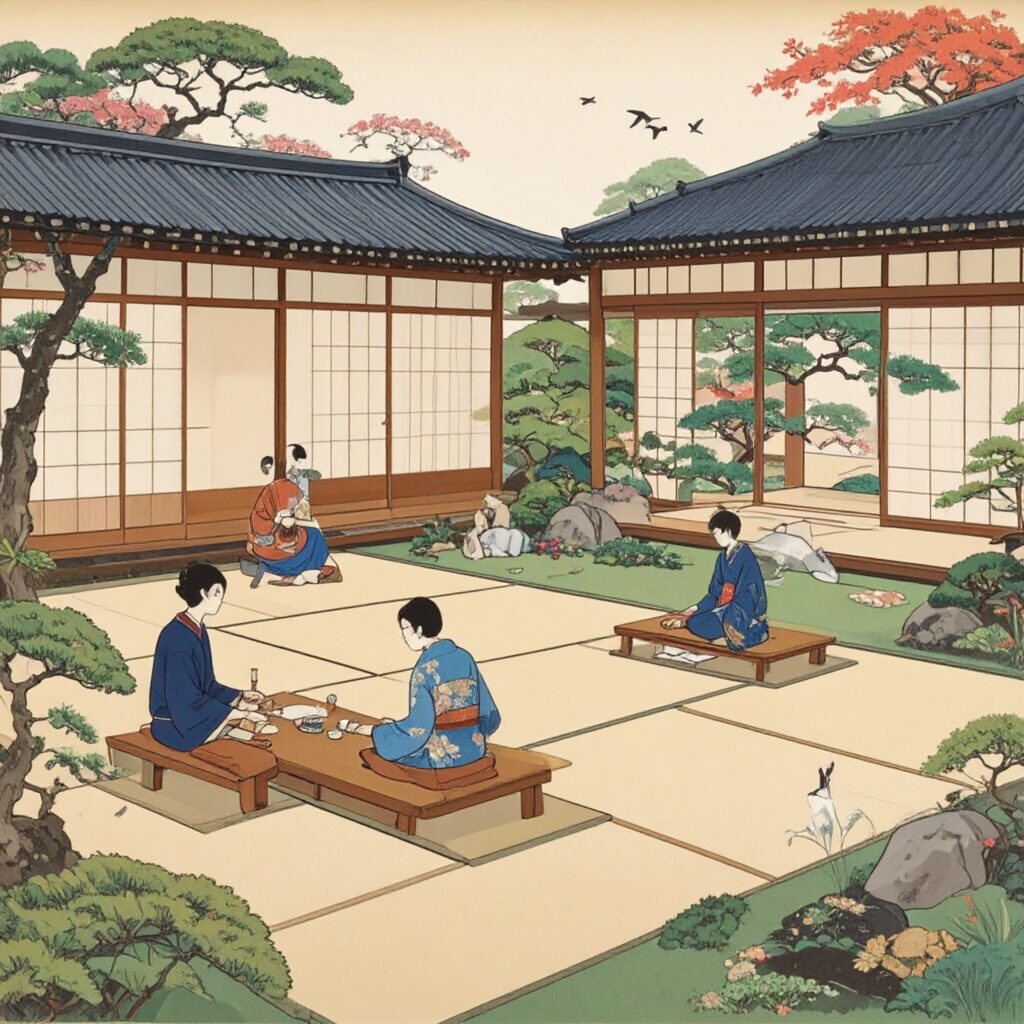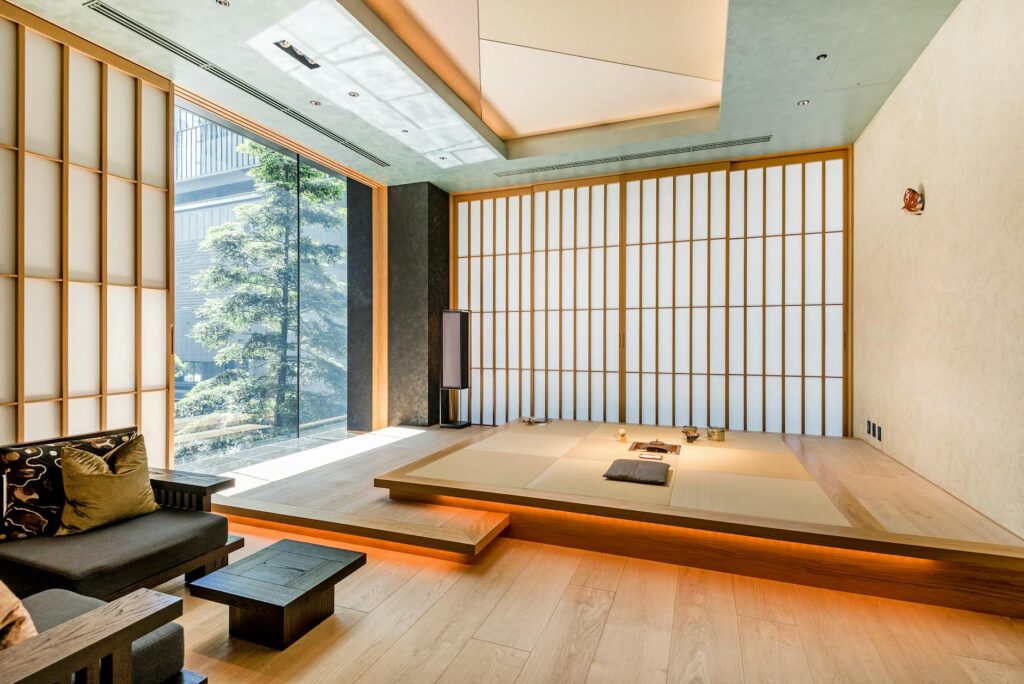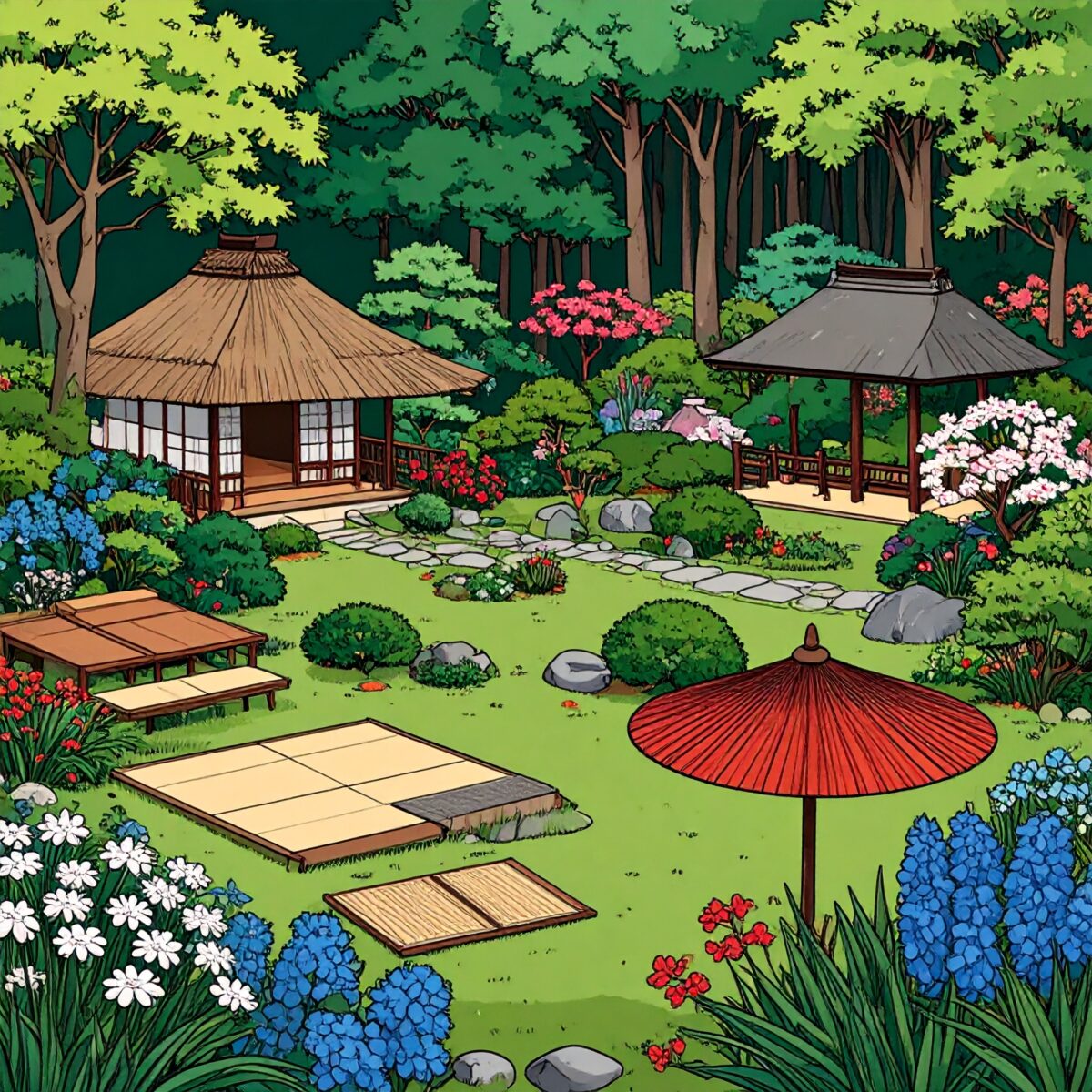“Less is more.”
This phrase now lies at the heart of minimalism around the world. But there is a country that has lived by this principle for over a thousand years.
That country is Japan.
Not decoration, but negative space.
Not opulence, but tranquility.
Not utility, but presence.
Today, discerning buyers around the world are being drawn to the quiet beauty of Japanese architecture—a beauty that whispers, rather than shouts.
In this article, we explore the enduring value of minimalist, essential living through three symbols of the Japanese home: tatami, shoji, and the tsuboniwa (courtyard garden)—each a timeless expression of space that nourishes the soul.
■ Tatami — A Philosophy of Living, Not Merely Seating
Tatami is not merely a flooring material.
It is a form of spatial spirituality—a foundation that has long supported both the physical rhythm and emotional calm of Japanese life.
A tatami room gently encourages stillness.
Its soft surface does more than support the body—
it offers a space where the mind itself is quietly rebalanced.
- Its gentle surface welcomes all modes of living: sitting, lying down, dining, reading.
- The natural scent of igusa grass offers a subtle, calming effect.
- Cool in summer, warm in winter—its insulation and moisture-regulating properties are exceptional.
- With shoes removed, the body fully merges with the space—inviting a sense of quiet unity.
A tatami room gently encourages stillness.
Its soft surface does more than support the body—it offers a space where the mind itself is quietly rebalanced.

■ Shoji — Bridging Light and Space with Gentle Elegance
Unlike glass or curtains, shoji softens light.
It’s not merely a visual effect—it functions as a subtle instrument that brings calm and composure to the entire space.
In a room framed by shoji, one becomes more attuned to the passage of time.
And for those living fast-paced lives, this subtle awareness may be the ultimate form of luxury.
- Instead of harsh direct light, it diffuses a gentle, ambient glow.
- Its breathable structure allows air to flow naturally, giving the space a sense of quiet rhythm.
- Through translucent paper, one senses the passing of time—a stillness shaped by shifting light.
- The smooth, gliding motion of opening or closing a shoji feels almost ceremonial in its grace.
In a room framed by shoji, one becomes more attuned to the passage of time.
And for those living fast-paced lives, this subtle awareness may be the ultimate form of luxury.
■ Tsuboniwa — Where Nature is Not Possessed, But Harmoniously Shared
A tsuboniwa is a small, secluded garden often tucked within the heart of a home or just beyond its walls.
Modest in size, yet profound in impact, it serves as a breathing space—a spiritual core of the Japanese residence.
It exists for the inhabitant alone—a private sanctuary, where stillness of spirit takes root.
- A single maple or patch of moss reflects the season and brings a quiet depth of time to the home.
- It is a portal to nature’s subtle signals—light, breeze, birdsong.
- Designed to shield the eye while opening the soul, it maintains privacy while inviting introspection.
- It transforms the home into a living canvas—a dwelling with ever-changing views.
A tsuboniwa is not meant to be displayed.
It exists for the inhabitant alone—a private sanctuary, where stillness of spirit takes root.
■ A Spatial Philosophy Inspired by Zen
Tatami, shoji, and tsuboniwa—each finds its roots in the quiet philosophy of Zen.
But they offer something far more lasting—a place that prompts us to reconsider: what does it truly mean to live well?
It is this question that is now drawing the attention of the world’s most discerning buyers—toward a culture where luxury is measured not in excess, but in clarity, stillness, and depth.
- A stillness that invites introspection
- The discipline of removing the unnecessary
- A refined sensitivity that sees meaning in what appears empty
- Design that embraces ma, or spatial “emptiness,” to spark imagination and inner dialogue
Such spaces may not be defined by high-tech features. They are prompting the world’s wealthy to reexamine what it means to live richly.

■ Luxury, Redefined — In Direct Contrast to the Global Standard
As the world’s affluent grow weary of glamorous, heavily adorned interiors, they are now seeking something deeper: a home that quiets the soul.
- Not mood lighting, but natural sunlight filtered through shoji screens.
- Not plush carpets, but the tactile comfort of bare feet on tatami.
- Not digital installations, but the earthy scent of moss dampened by rain.
Such homes—designed to restore the senses—exist quietly in Japan.
■ Summary — Stripped of Excess, What Remains Is Authentic Luxury
Japanese homes are never ostentatious.
And yet, they offer a quiet beauty—one that invites reflection and lives in harmony with nature.
Tatami. Shoji. Tsuboniwa.
These are not symbols of status or mere function. They are expressions of a way of life.
An irreplaceable dwelling where quiet richness begins on the inside.
That is the refined choice—to live within the quiet luxury of Japanese minimalism.




